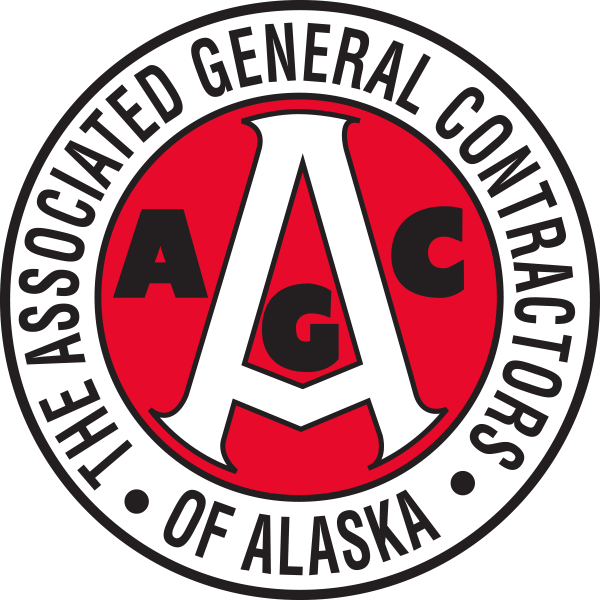

Positive Outlook for Construction in 2023 Highlights Ongoing Need for Workers
The award-winning Aloft Hotel, built by Davis Constructors & Engineers, Inc., is an example of how construction enriches the community. Research shows Alaska’s construction industry has a clear and significant effect on the state economy, accounting for about 10 percent of the cash flow in Alaska. Half of that is directly from wages to construction industry workers and the other half is money those workers spend in the state.

rom Utqiaġvik to Adak and Metlakatla, Alaska relies on the construction industry for roads, public buildings, houses, and the infrastructure that makes them all work.
When all job categories are included—direct, indirect, and induced—the Alaska construction industry accounts for 39,400 jobs and about $3.3 billion in wages.
Alaska’s construction economy accounts for 9 percent of the jobs in the state and 10 percent of the economy, says McKinley Research Group, the research and consulting office that compiled the January 2023 Economic Benefits of Alaska’s Construction Industry and the 2023 Construction Spending Forecast for Associated General Contractors, or AGC, of Alaska and the Construction Industry Progress Fund, or CIPF. The spending forecast was presented at Construction Industry Progress Fund breakfasts in Anchorage and Fairbanks February 2 and 3.
After a gray forecast for 2022, construction spending is projected at $5.6 billion in 2023, up from last year’s projection of $4.6 billion. In fact, most indicators are for upward movement in construction spending this year despite the challenges of high material costs and interest rates. This year, private sector spending is expected to represent 51 percent of total construction spending, with public projects making up the remaining 49 percent. That’s consistent with 2022 but a shift from previous years, when private sector investment typically made up nearly two-thirds of the projected construction spending total.
Some of the increase in overall spending over 2022 is attributable to a few sectors: oil projects on the North Slope, mine development, and ongoing work on infrastructure supporting the Alaska visitor industry.
Public sector spending is expected to see a boost from the Infrastructure Investment and Jobs Act, or IIJA, this year, primarily through spending on transportation, broadband, and water and wastewater infrastructure. In some sectors, design work will be required before construction activity begins.
The bigger news from the presentation lines up with the theme that AGC has been championing for years: construction jobs in Alaska are vital to the state’s economy and have significant indirect benefits within the communities where workers reside.
About 23,700 people, or about 5 percent of the Alaska workforce, are directly employed in the construction industry, generating about $2.3 billion, according to McKinley Research Group. Of those, 82 percent are Alaska residents, and 87 percent of the wages went to Alaskans.
Those workers buy homes, shop, go to movies and restaurants, and have children who participate in activities, underwriting jobs in many other sectors. The indirect benefits of those workers earning wages and living in Alaska nets an additional $1 billion for the economy and represents another 4 percent of total Alaska employment.
The average annual wage for a construction worker is $81,600, nearly one-third more than the average Alaska wage of $62,100. However, due to an aging workforce and a push toward college for high school students, the construction industry is experiencing a labor shortage.
McKinley Research Group estimates the sector will see 1,523 job openings each year in this decade, about 40 percent in the construction laborers category, another 30 percent in the operating engineers and other equipment operators category, and the remaining split between carpenters and electricians.
AGC and CIPF have partnered to create WeBuildAlaska.com, a site focused on engaging Alaskans of all ages about the “lucrative, long-term, and immediate benefits of careers in the state’s construction industry.”
The site seeks to share the news about the industry and connect potential workers with apprenticeship and training programs, providing them the resources and information needed to get a foothold in construction.
“With the help of AGC of Alaska, the CIPF Fund, and its efforts to create the WeBuildAlaska campaign, everyone has the opportunity to make a career in the Alaska construction industry,” the website states.
2023 Economic Benefits of Alaska’s Construction Industry
Number of Alaska construction workers, including wage, salary, and self-employed workers
1 in 20
Number of jobs in Alaska’s construction sector
$2.3 Billion
Total labor income of construction workers, including self-employed workers
$81,600
Average annual construction worker wage
31%
Percentage of construction worker wage above the average wage for all Alaska workers
Percentage of construction jobs held by Alaska residents
87%
Percentage of construction wages paid to Alaska residents
2,588
Number of employers in the construction industry
39,400
Number of statewide construction-related jobs, including multiplier effects
9%
Percentage of all Alaska jobs attributed to construction-related activity
Total statewide labor income impact, including multiplier effects
10%
Percentage of all Alaska income related to construction-related activity
9.8%
Predicted growth in construction trades between 2020 and 2030
$5.6 Billion
Estimated 2023 construction spending
Information source: AGC 2023 Economic Benefit Summary